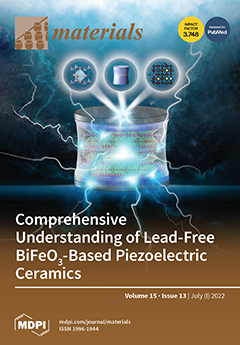The flotation separation (FS) of both scheelite and calcite minerals with similar physicochemical properties remains challenging, since the Ca active sites exist on their surfaces. The present work investigated the effects of different addition points of MnCl
2 on the FS of scheelite
[...] Read more.
The flotation separation (FS) of both scheelite and calcite minerals with similar physicochemical properties remains challenging, since the Ca active sites exist on their surfaces. The present work investigated the effects of different addition points of MnCl
2 on the FS of scheelite and calcite by micro-flotation tests, zeta potential measurements, UV-Vis spectrophotometer measurements, infrared spectrum analysis, and X-ray photoelectron spectroscopy (XPS) tests, and the mechanism of separation is elucidated. Interestingly, the recovery of scheelite was 91.33% and that of calcite was 8.49% when MnCl
2 was added after sodium silicate. Compared with the addition of MnCl
2 before Na
2SiO
3, the recovery of scheelite was 64.94% and that of calcite was 6.64%. The sequence of adding MnCl
2 followed by Na
2SiO
3 leads to the non-selective adsorption of Mn
2+ on the surface of scheelite and calcite firstly, and later, sodium silicate will interact with it to produce hydrophilic silicate. This substantially enhances the hydrophilicity on the surface of both minerals, making separation impossible. In contrast, the addition of MnCl
2 after sodium silicate can promote the formation of a metal silicate and enhance the selectivity and inhibition effect on calcite. Meanwhile, under this dosing sequence, the adsorption of Mn
2+ on the scheelite surface offered more active sites for sodium oleate, which improved the scheelite surface hydrophobicity. This leads to a great improvement of the FS effect of scheelite and calcite.
Full article






